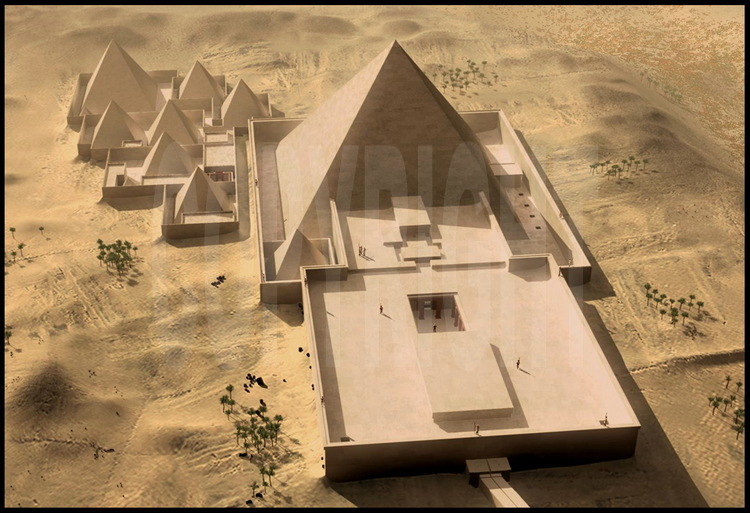|
|
|
|

|
|
© Stéphane Compoint
|
|
Virtual representation of the funerary monument of Pepi I, the successor of Userkare, at the time of the VIth dynasty at the end of the Old Kingdom. In South Saqqara these monuments are in bad shape but they remain the only link to the past. The site of Pepi-Men-Nefer, meaning “balanced and perfect” and also the Greek name of Memphis was excavated by French archeologists J. Leclant and A. Labrousse and was terribly damaged by quarriers, but modern-day technologies allow scientists to rebuild the past with minimal damage and understand the daily lives of Egyptians in the Old Kingdom. 4300 years ago, the funerary complex of a king, dominated by the pyramid, served as a crossroads for trade, the arts, and religion. High ranking officials, priests, scribes and architects were inhumed around the king’s pyramid (queens, of whom there were many in the days of Pepi I, even got their own smaller pyramids). The entire country’s population was at the service of the pharaoh. Daily life carried on in the valley, along the banks of the Nile and a stone’s throw from the necropolis.
© Gédéon Programmes.
|
|
|
|
|

